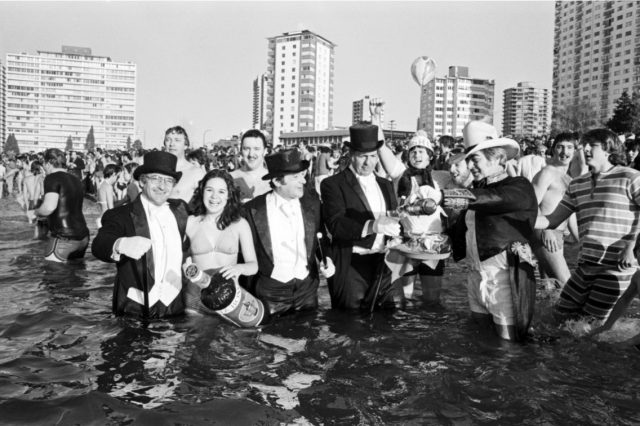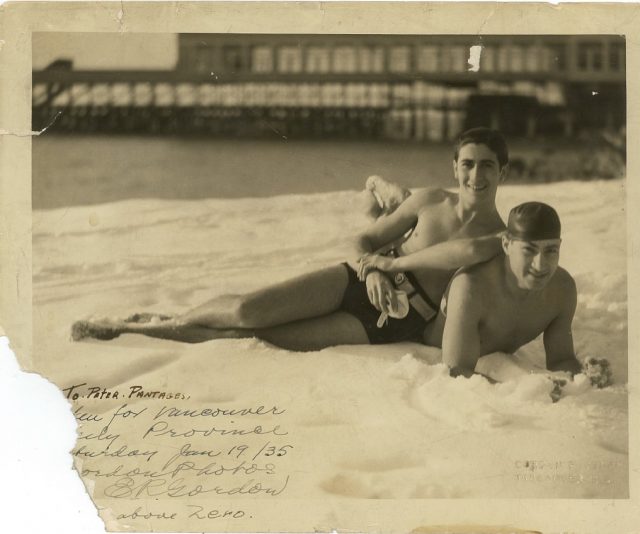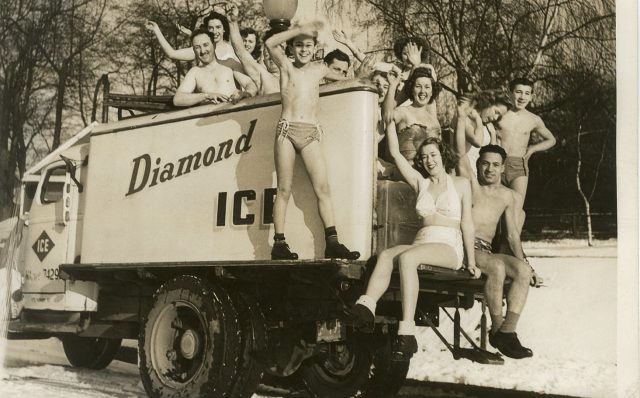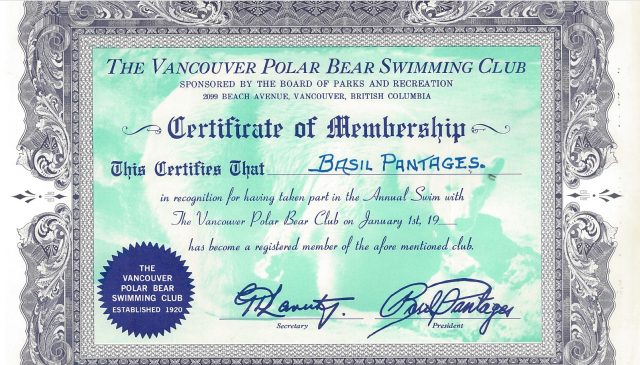October is women’s history month, and I can’t think of anyone more inspirational than Ivy Granstrom: Queen of the Polar Bears
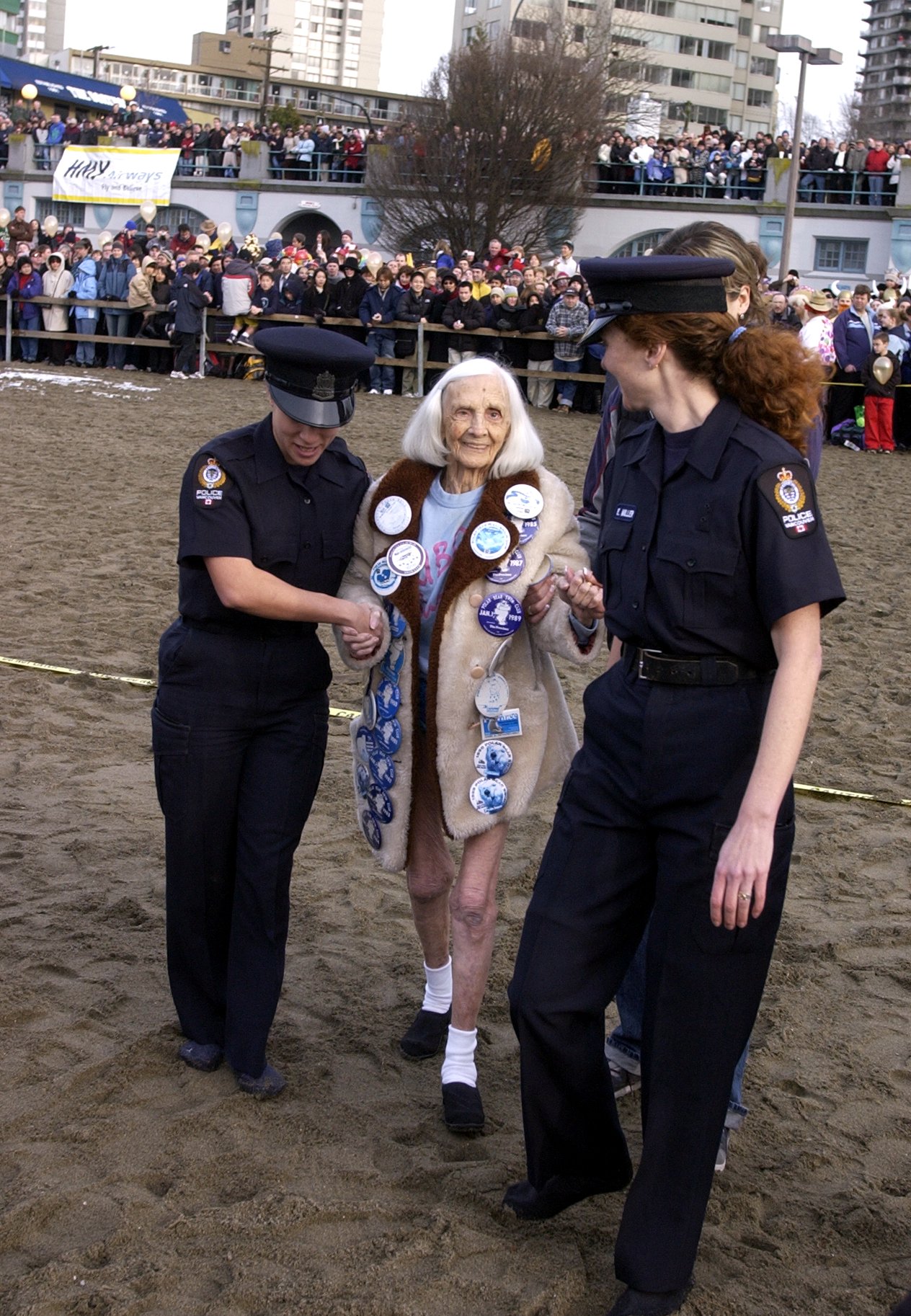
This story is from Vancouver Exposed: Searching for the City’s Hidden History
Meet Ivy Granstrom:
Ivy Granstrom participated in 76 consecutive polar bear swims. She began in 1928, as a 16-year-old, which, incidentally, was the year of the chilliest swim on record with a water temperature of just 2 degrees.
Born in Glace Bay, Nova Scotia, Ivy was one of 14 children.
Legally blind since she was three weeks old, Ivy became a remarkable athlete, and was an unstoppable force even after a car accident left her with a severe back injury at age 60. To rehabilitate, she walked, jogged and ran into the record books of Masters track competitions.
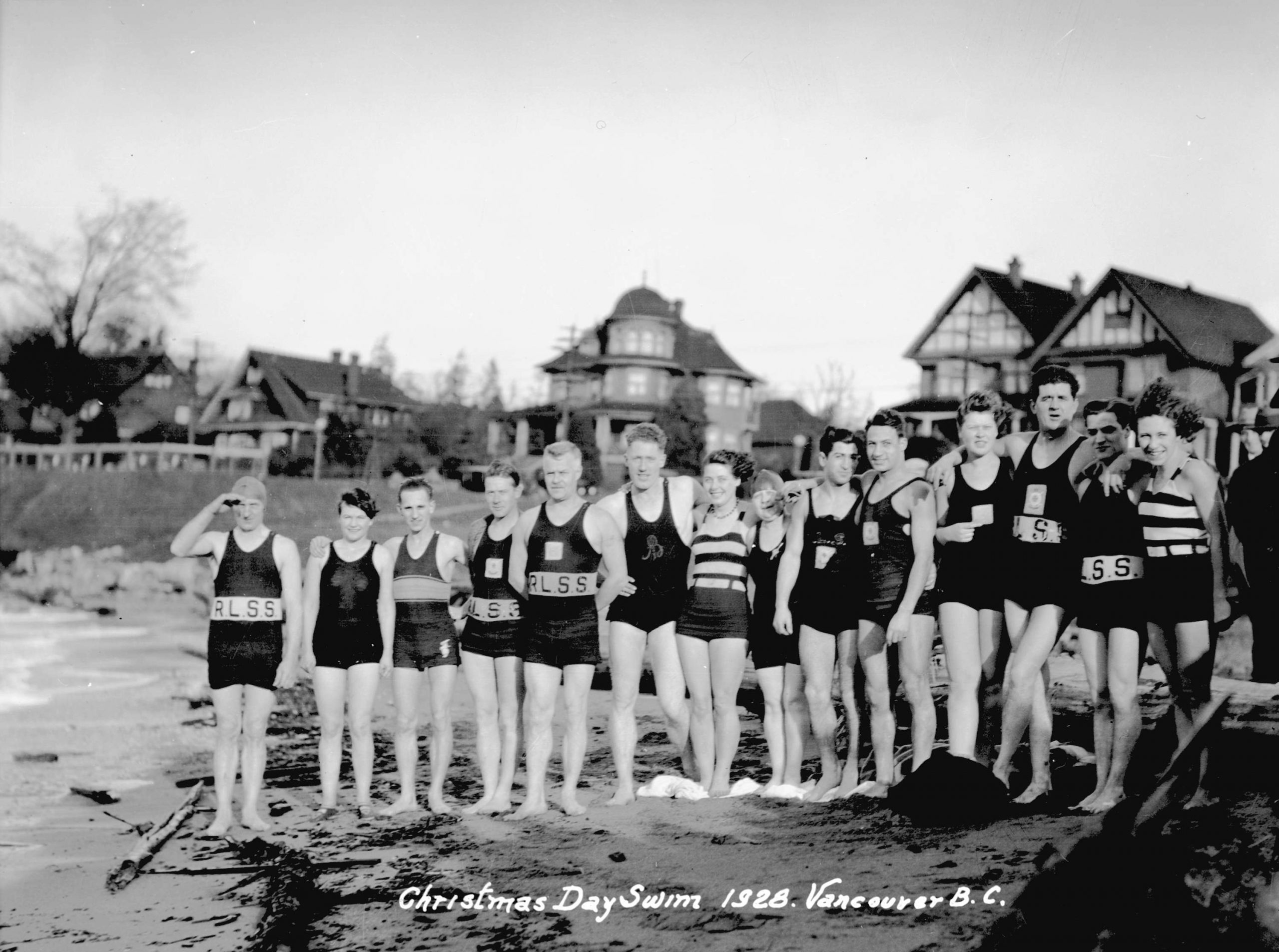
Athlete of the year:
In 1980, the 68-year-old was running 30 kilometres a week with Paul Hoeberigs. Hoeberigs guided her by voice and by holding the other end of a cloth band. When she wasn’t running or swimming she curled, did woodwork, gardened or skied.
Ivy was named Sport BC Athlete of the Year in 1982, appointed a Member of the Order of Canada in 1988 and inducted into the Terry Fox Hall of Fame in 2001.

In 1994, Ivy broke five records, two at the Pan Am Masters championships and three at the World Masters Games in Australia.
She died in April 2004, four months after completing her last Polar Bear Swim.

Fun Fact: Ivy’s grandson is TV director Richard Martin, whose credits include The New Addams Family, Highlander and Ninja Turtles. In 1979, he directed Poison Ivy, a documentary about his grandmother for the National Film Board of Canada. Richard’s father is Dick Martin of Rowan & Martin’s Laugh-In. (Source: IMDB.Com)
© All rights reserved. Unless otherwise indicated, all blog content copyright Eve Lazarus


